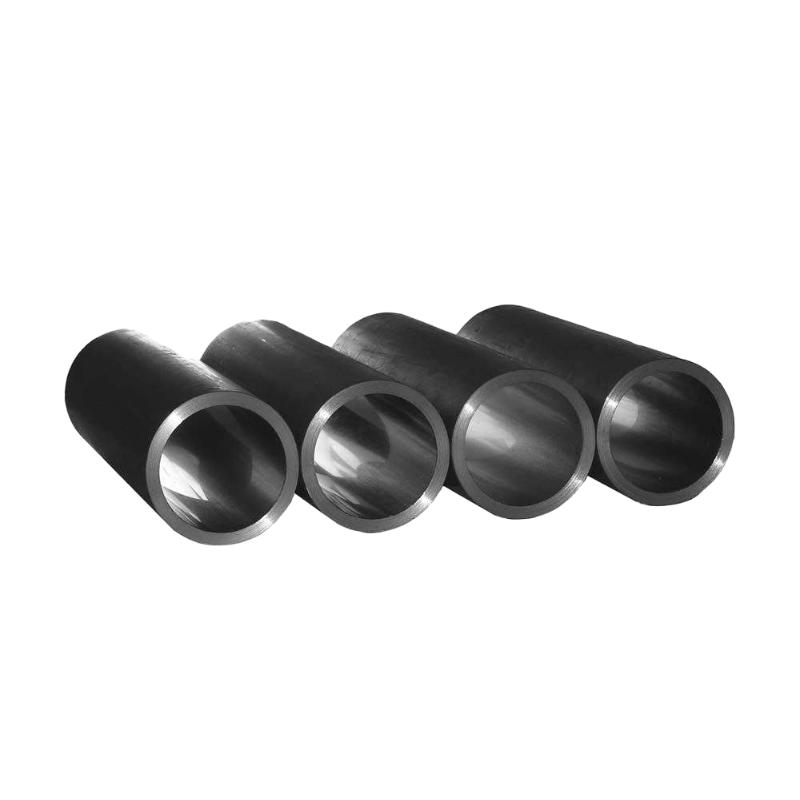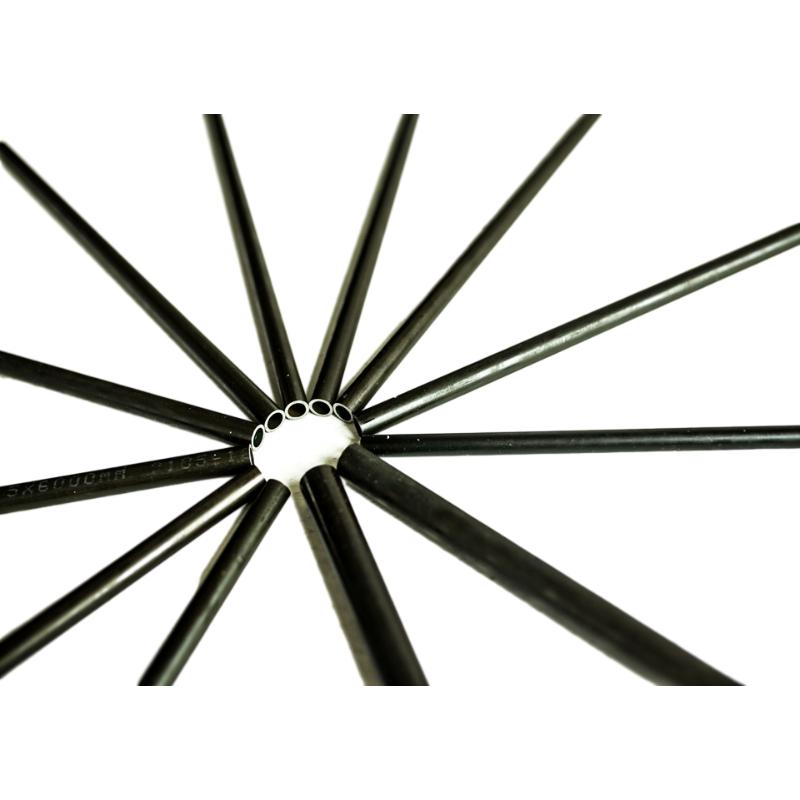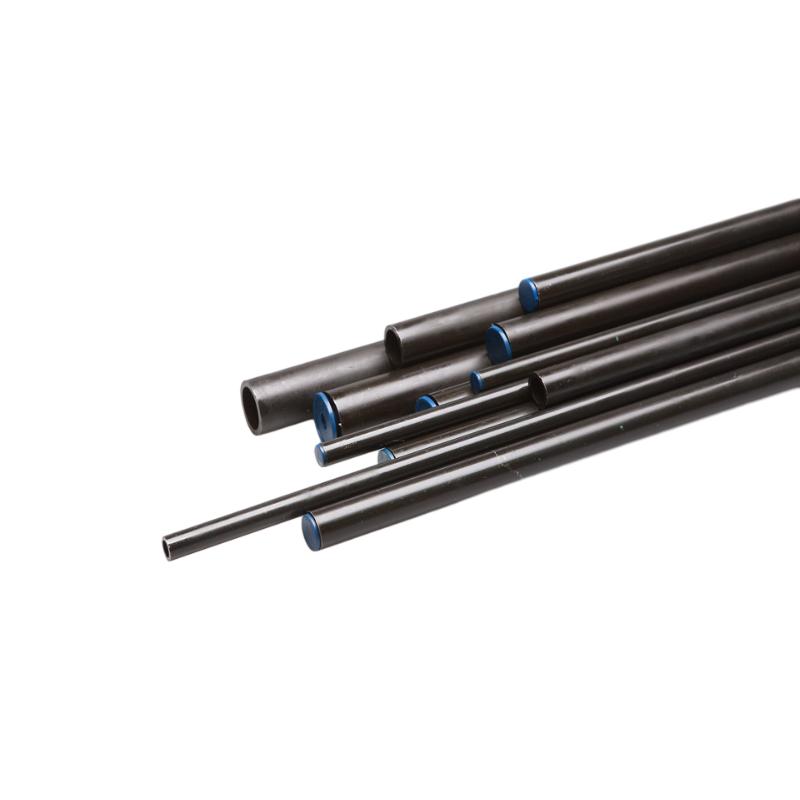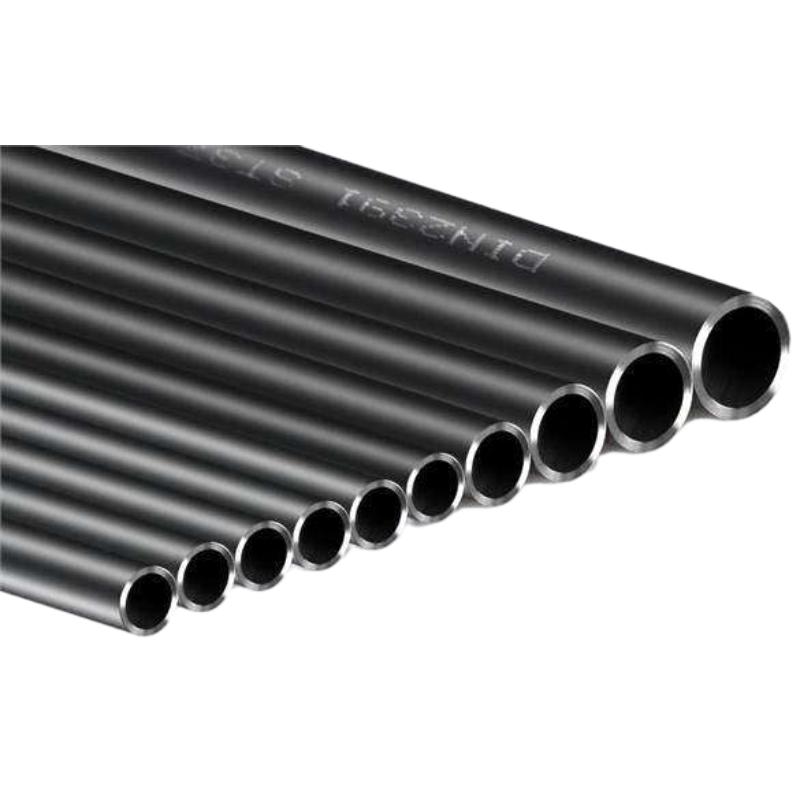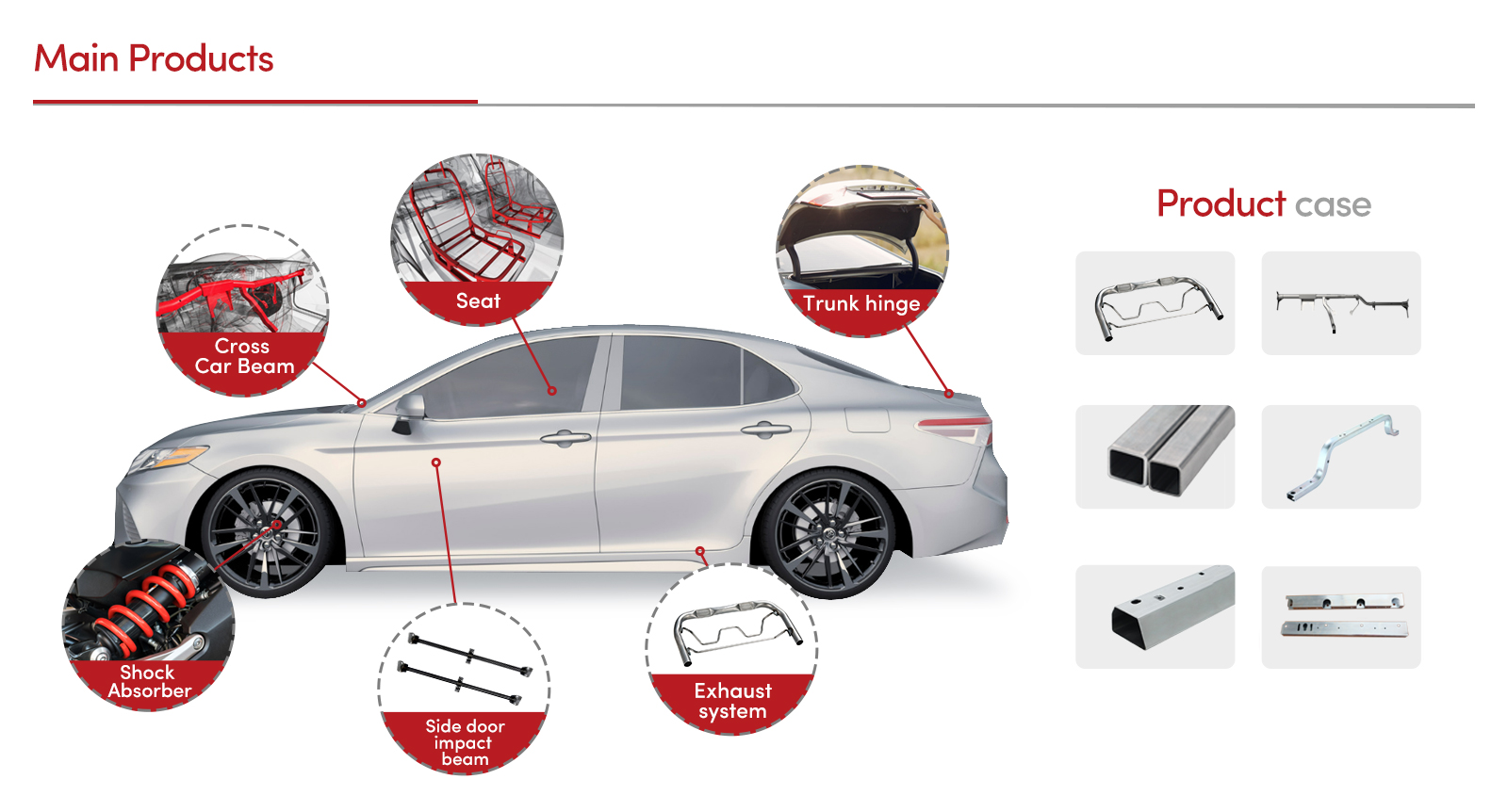Benefits of Using Structural Steel Tubing
1. Exceptional Strength-to-Weight Ratio
One of the most significant advantages of structural steel tubing is its impressive strength-to-weight ratio. Unlike traditional solid steel bars or plates, CBIS precision steel tubes provide significant structural support without the added bulk. This characteristic is particularly beneficial in mechanical equipment, where every ounce counts. Engineers can design lighter and more efficient machines that consume less energy and provide optimal performance while maintaining structural integrity.
2. Versatile Applications
Structural steel tube is incredibly versatile, making it suitable for a wide range of mechanical applications. From frèamaichean suidheachain chàraichean to mechanical components, the adaptability of steel tubing allows it to meet various design specifications. Its ability to be easily welded, formed, and fabricated means that it can be utilized in custom solutions that meet the unique demands of different projects.
3. Enhanced Resistance to Environmental Factors
Steel tubing is known for its durability and resistance to environmental challenges. Unlike materials that may corrode or degrade over time, structural steel tubing undergoes treatments that increase its resistance to rust, corrosion, and impact. This resilience ensures that mechanical equipment remains operational for longer periods, reducing maintenance costs and downtime.
4. Economical Solution
Investing in structural steel tubing can also translate into significant cost savings for manufacturers and builders. The long lifespan, reduced maintenance needs, and lightweight nature of structural steel tubes can decrease operational costs significantly. Moreover, the efficiency of using pre-fabricated steel components can lead to faster assembly times, ultimately saving time and labor costs during the construction process.
5. Eco-Friendly Choice
In today’s world, the demand for sustainable construction materials is on the rise. Structural steel tube stands out as an eco-friendly option due to its recyclability. Steel is one of the most recycled materials globally, and using structural steel tubing contributes to a more sustainable lifecycle for mechanical equipment. By choosing this material, companies can reduce their carbon footprint and promote environmental responsibility.
6. Improved Aesthetic Appeal
Structural steel tubing is not just about functionality; it also brings an element of aesthetic appeal to mechanical designs. The sleek, clean lines of steel tubing can be incorporated into modern designs, enhancing the overall look of mechanical equipment. This feature is particularly valuable in industries where the visual impression of machinery can influence customer perceptions and brand image.
Comparing Structural Steel Tubes with Other Materials: Why Steel is the Best Choice
First and foremost, structural steel tubes possess exceptional strength-to-weight ratios. Unlike alternatives such as aluminum or plastic tubes, which may offer some resilience, steel provides unmatched robustness. This means that structures made from steel can bear heavier loads and stress, ensuring safety and longevity in various applications.
Moreover, precision steel tubes are engineered for accuracy, with tighter tolerances than many other materials. This precision is essential for projects that require exact measurements and quality finishes. Using precision steel tubes also reduces the need for additional machining and adjustments, which can lead to time and cost savings in the construction process.
Another advantage of structural steel tubes is their outstanding resistance to environmental challenges. Unlike wood or plastic, which can deteriorate over time due to moisture, pests, or UV exposure, structural steel tubes remain impervious to such threats, making them a more sustainable and low-maintenance choice.
Additionally, steel is infinitely recyclable, aligning with today's eco-conscious construction practices. Utilizing structural steel tubes contributes to a greener built environment, whereby waste is minimized, and resources are conserved.
So comparing structural steel tubes with other materials, steel emerges as the best choice due to its strength, precision, durability, and eco-friendliness. For any construction project, opting for structural steel tubes, particularly precision steel tubes, is not just a smart decision; it's a commitment to quality and longevity in structural integrity. Choose steel – choose excellence.
Different Types of Structural Steel Tubes
Structural steel tubes are an integral part in mechanical equipment, providing strength, durability, and versatility to a wide range of applications. Let’s delve into the various types available and their unique benefits.
HSS Steel Tubes
Hollow Structural Steel (HSS) tubes are favored for their high strength-to-weight ratio. They come in various shapes, including square, rectangular, and round, offering unmatched versatility. The design of HSS steel tubes means they can easily fit into different structural systems, making them suitable for everything from buildings to bridges.
Hollow Structural Tubes
Hollow structural tubes are cylindrical in shape, often used in applications requiring a lightweight yet strong solution. Their hollow design allows for easy integration into frameworks and supports, optimizing space and materials. This type of tubular steel is commonly used in scaffolding and various building frameworks.
Metric Structural Tubing
For projects requiring precise measurements, metric structural tubing is available. This type of tubing adheres to metric specifications, making it necessary for international projects. Designers and architects can efficiently incorporate these tubes into their plans, ensuring compatibility with global standards.
Rectangular and Round Structural Steel Tubing
Rectangular structural steel tubing excels in applications demanding greater rigidity, making it an ideal choice for structural frames. On the other hand, round structural steel tubing is favored for its aesthetic appeal and ability to handle torsional loads effectively, commonly used in railings, fences, and other architectural elements.
Shaped Structural Tubing
Shaped structural tubing refers to any non-standard cross-section, allowing for customized designs that meet specific project requirements. Whether it’s elliptical or another unique shape, shaped structural tubing provides creative freedom in architectural design.
 Afraganach
Afraganach  Albànianach
Albànianach  Amharic
Amharic  Arabach
Arabach  Armenianach
Armenianach  Azerbaijani
Azerbaijani  Basgach
Basgach  Belarusianach
Belarusianach  Bengàlach
Bengàlach  Bosnianach
Bosnianach  Bulgàrianach
Bulgàrianach  Catalanach
Catalanach  Cebuano
Cebuano  Corsicanach
Corsicanach  Croatianach
Croatianach  Seacach
Seacach  Dànach
Dànach  Duitseach
Duitseach  Sasannach
Sasannach  Esperanto
Esperanto  Estòinianach
Estòinianach  Fionnlaineach
Fionnlaineach  Frangach
Frangach  Frisianach
Frisianach  Galicianach
Galicianach  Georgianach
Georgianach  Gearmailteach
Gearmailteach  Grèigeach
Grèigeach  Gujarati
Gujarati  Haitian Creole
Haitian Creole  Hausa
Hausa  Hawaiianach
Hawaiianach  Eabhrach
Eabhrach  Chan eil
Chan eil  Miao
Miao  Hungàrianach
Hungàrianach  Innis Tìleach
Innis Tìleach  igbo
igbo  And-Innseach
And-Innseach  Èireannach
Èireannach  Eadailteach
Eadailteach  Iapanach
Iapanach  Iabhaininnseach
Iabhaininnseach  Kannada
Kannada  Kasakh
Kasakh  Ciméireach
Ciméireach  Ruanda
Ruanda  Corèanach
Corèanach  Curdach
Curdach  Kyrgyz
Kyrgyz  TBh
TBh  Laidinn
Laidinn  Latbhianach
Latbhianach  Lithuanianach
Lithuanianach  Luxembourgach
Luxembourgach  Macedonianach
Macedonianach  Malgashi
Malgashi  Malaidheach
Malaidheach  Malayalamach
Malayalamach  Malteseach
Malteseach  Maori
Maori  Marathiach
Marathiach  Mongolianach
Mongolianach  Myanmar
Myanmar  Nepalach
Nepalach  Lochlannach
Lochlannach  Lochlannach
Lochlannach  Occitan
Occitan  Pashto
Pashto  Persianach
Persianach  Pòlainneach
Pòlainneach  Portugalach
Portugalach  Punjabi
Punjabi  Romànianach
Romànianach  Samoan
Samoan  Gàidhlig na h-Alba
Gàidhlig na h-Alba  Serbianach
Serbianach  Sasannach
Sasannach  Shona
Shona  Sindeach
Sindeach  Sinhala
Sinhala  Slovacanach
Slovacanach  Slobhenianach
Slobhenianach  Somali
Somali  Spàinneach
Spàinneach  Sundais
Sundais  Swahilieach
Swahilieach  Suaineach
Suaineach  Tagalogach
Tagalogach  Tajik
Tajik  Tamileach
Tamileach  Tatarais
Tatarais  Telugach
Telugach  Thaidheach
Thaidheach  Turcach
Turcach  Turkmen
Turkmen  Ucràinis
Ucràinis  Urdu
Urdu  Uighur
Uighur  Uzbek
Uzbek  Bhietnam
Bhietnam  Cuimris
Cuimris  Cuideachadh
Cuideachadh  Giúdais
Giúdais  Ioruba
Ioruba  Zulu
Zulu 





